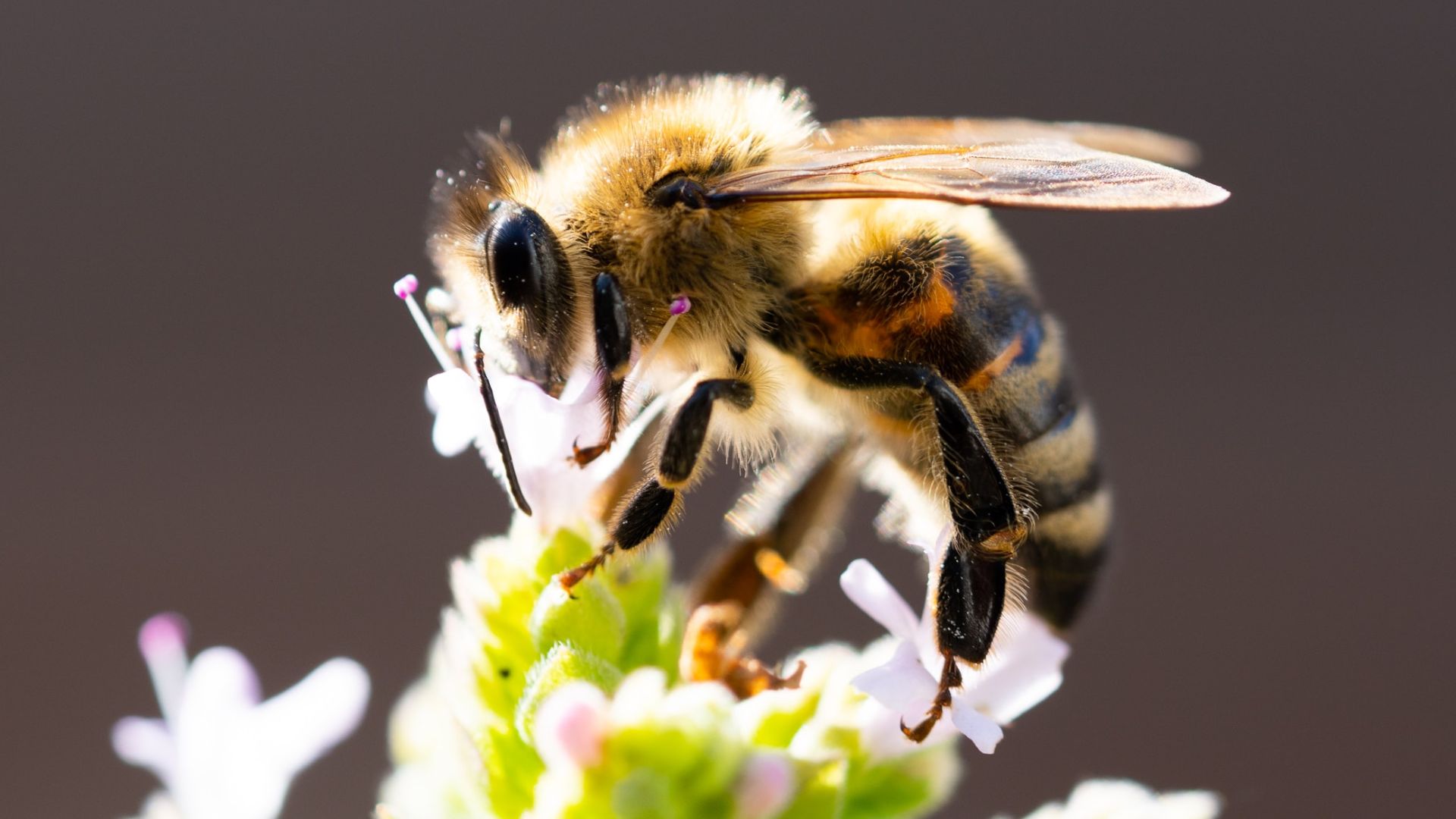Life without honey bees would be much less interesting and quite different to what we have come to expect.
Without bees, we would be unable to grow many of the crops that form an important part of our diets because many crop plants are dependent on insects for pollination. Almonds, for example, are totally reliant on honey bees for pollination. Many other fruit and vegetable crops depend, to a large extent, on honey bees for pollination, including apples, blueberries, avocados, melons, pumpkins, squashes, macadamia nuts and others.
Some of our broadacre crops benefit from the pollination activity of insects as well, including canola, lucerne and cotton. The economic value of services provided by insect pollinators has been estimated at $18 billion per annum in Australia, and several hundred billion dollars globally.
But the benefits to society from bees goes beyond pollination. The nectar gathered by honey bees as they pollinate crops is converted to honey in the beehive, and pollen stored by bees is also sold as a dietary supplement. Honey production is valued at close to $100 million per annum in Australia. Other products harvested from honey bees include royal jelly (a special food fed by worker bees to the queen) and beeswax (used for candles, cosmetics and furniture polish, among other things).
Aside from direct human benefits, the pollination activities of bees play a crucial role in maintaining natural ecosystems. A wide range of native flowering plants and trees rely on pollination for their reproduction and very survival, so the presence of bees is vital to maintaining ecosystem health.
Concerns about the health of bees have been raised in recent years as bee colonies have declined across large portions of the planet. The number of honey bee colonies declined by roughly 50 per cent in North America and Europe between 1980 and 2010 (although the number of colonies has rebounded slightly in the US since then).
WHAT ARE THE MAIN THREATS TO BEES?
The decline in honey bee numbers has been attributed to a number of factors, but the precise reason for the decline is unknown. Among the more likely culprits are pesticides, pathogens, changes in beekeeping practices, habitat loss and climate change.
Pesticides used on broadacre crops have been suggested as a causal factor in the decline. Europe has temporarily banned the use of neonicotinoid insecticides because they are widely used in broadacre cropping and can be detected in nectar of crop plants visited by honey bees. Further, testing the laboratory has shown that sub-lethal doses of neonicotinoid insecticides can disrupt the orientation ability of honey bees. However, the association between these insecticides and bee decline is rather weak, especially considering that neonicotinoid insecticides are widely used in Australia without the dramatic declines in bee colonies seen overseas.
A far more likely cause of bee decline is varroa mite, a tiny pest that feeds on bees and their larvae. Locations that have been infested with varroa mite have seen substantial declines in honey bee populations. Interestingly, the mite is not established in Australia. It has been intercepted in Australian ports on several occasions, but these incursions have been rapidly detected and eliminated.

The correlation between varroa mite and honey bee decline is not absolute, however, so it is clear that other factors are at play. The consensus among entomologists and beekeepers is that a combination of factors are likely contributing to honey bee decline.
Another threat to honey bees in Australia is bushfire. The recent bushfires in south-eastern Australia took a heavy toll on commercially-managed honey bees. It is estimated that 9,000 hives were destroyed by the fires in NSW alone, and the bee population of an additional 80,000 hives was reduced by two-thirds.
Beyond these immediate losses is the long-term impact of fire damage to the flowering trees that are typically visited by honey bees. Fires charred more than 60 per cent of the forest land that served as a source of nectar for honey bees in the fire-stricken areas in NSW, which will likely result in a 30-50 per cent reduction in honey production for the next 10 years.
In light of the many benefits that honey bees bring to our lives, it is clear that these winged wonders need to be celebrated and protected. Judicious use of insecticides, vigilance to prevent introduction of varroa mite to Australia, and limiting fire damage to bushland are some of the more obvious and impactful steps we can take.
Homeowners can help by avoiding the application of insecticides to flowering plants when they are blooming. Finally, we can all help by purchasing honey from local producers, even if it may cost a bit more than cheaper imported honey.






Social
Explore the world of social